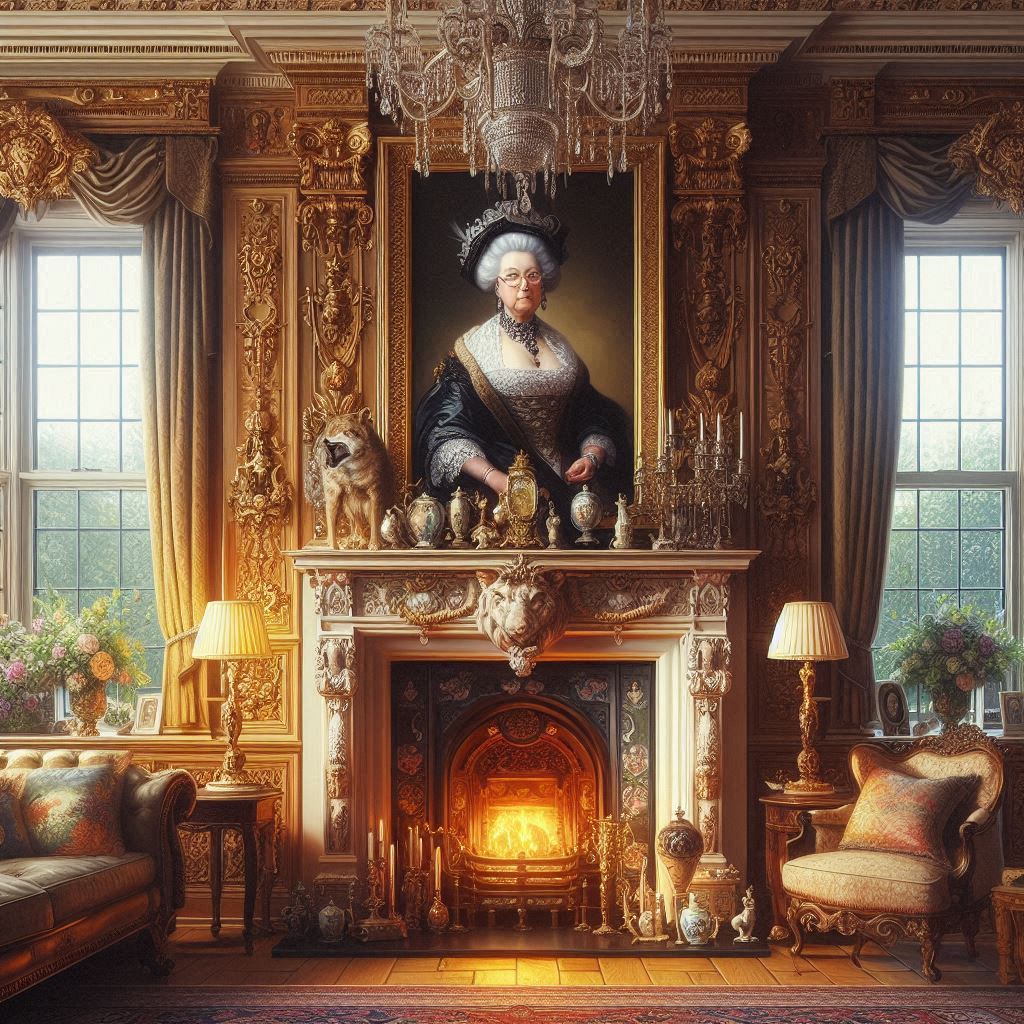
In the grand tradition of stately homes, portraits that hang above fireplaces serve as reminders of the household's true masters. Even in death, these masters exert their influence over the living. The Eurig family is no exception.
Perched on the mantel sits Grandmama's portrait. Her snow-white hair is styled with elegant precision. With piercing, almost prophetic eyes, she gazes calmly in your direction. Her pale, ethereal skin is remarkably taut, save for the grimacing expression around her thin, pressed lips. A strand of pearls encircles her neck, a testament to the generational wealth she accumulated.
"Harold, you're a fool," Amber, an Eurig by marriage, exclaims with fiery intensity, her scarlet hair and silk dress reflecting her passion. "It was supposed to be a sure thing—" Harold, a bald, squat gentleman of indirect lineage (but a Eurig nonetheless), whimpers as he trails his irate wife into the living room.
Thwack!
The unexpected slap across his face reverberates through the room.
"I want a divorce!" Amber shrieks.
Is it the heat of the room? The stress of impending financial ruin? The fear of a costly marriage's demise? Whatever the reason, Harold finds himself pushing his former mistress-turned-wife into the fireplace. Her clothing ignites instantly.
"Omg!!!" Amber cries.
As he'll later recount to his lawyers: In shock, Harold stands frozen, watching his wife desperately try to stop, drop, and roll—ultimately, she twitches into stillness.
When he finally looks up, he sees for the first time, Grandmama's portrait smiling. Is he losing his mind? Or is she somehow proud?
Review by BangTech Inc
The story opens with a vivid description of the Eurig family's stately home, where portraits of ancestors loom over the living, suggesting their enduring influence. The portrait of "grandmama" is particularly striking—her elegant white hair, clairvoyant eyes, and grimacing expression create an eerie, almost supernatural presence that sets the tone for the tale.
The narrative quickly introduces conflict through Amber and Harold, a married couple embroiled in a heated argument. Amber, fiery and passionate, contrasts sharply with Harold, portrayed as a weaker, whimpering figure. Their dialogue is sharp and reveals tension—financial ruin and betrayal—culminating in Amber’s demand for a divorce. The sudden violence of her slap escalates the scene, and Harold’s impulsive act of pushing her into the fireplace is shocking, yet feels oddly inevitable given the buildup.
The prose is concise but effective, painting vivid images: Amber’s scarlet dress bursting into flames, her desperate attempt to extinguish them, and her eventual stillness. The use of "Omg !!!" feels slightly jarring, perhaps intentionally modern amidst the otherwise gothic tone, though it might detract from the story’s gravitas for some readers.
The ending is the strongest part, leaving a haunting ambiguity. Harold, in shock, looks to grandmama’s portrait and perceives a smile—whether real or imagined, it’s unclear. This moment raises questions about grandmama’s influence: Is she a spectral force approving of Harold’s act, or is his guilt and madness projecting onto the painting? The open-endedness invites interpretation, which is a strength in such a brief tale.
Overall, "The Portrait on the Mantel" is a compact gothic story that blends family legacy, domestic strife, and a hint of the supernatural. Its brevity keeps it punchy, though the pacing could benefit from a touch more buildup to Harold’s drastic action. The imagery is evocative, and the unsettling conclusion lingers. It’s a solid, atmospheric piece that effectively uses its central portrait as both a symbol and a mystery.